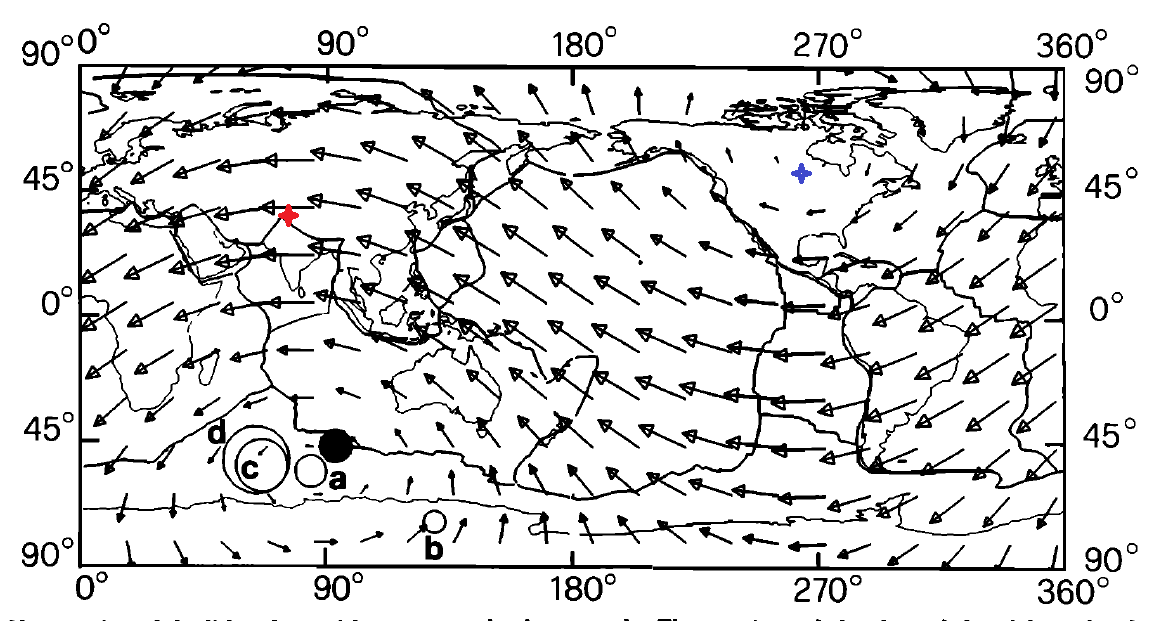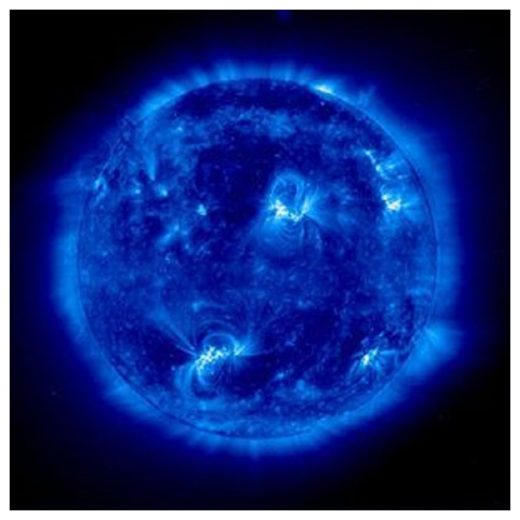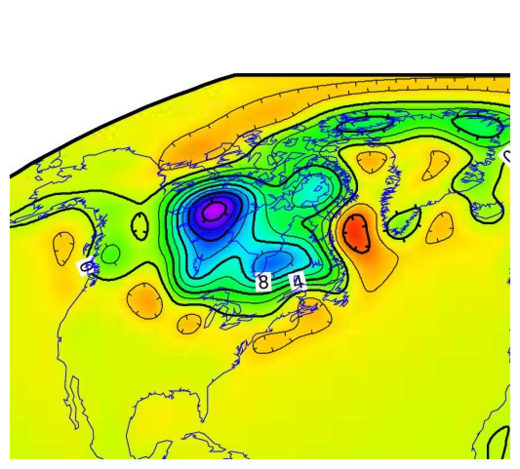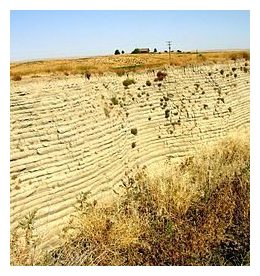During each kalpa, Mars exerted a continuous tidal effect on the Deccan Traps volcanism, drawing the subsurface asthenosphere rock upward producing an additional 20-meter thick layer, 'traps' meaning steps. Therefore, the Deccan Traps represent a geological clock covering approximately 3000 to 687 BC, herein dubbed the Vedic Period. It is impossible to drill through the many layers of the Deccan Traps. Instead, different provinces have been dated, where older sections of the traps are exposed.
This has proven difficult for several reasons. Most significantly, the 'Trap' rocks do not give the ancient dates that geologists expected, because they are less than 6,000 years old. Geologists maintain that potassium-argon, (K-Ar), dating does not work because the isotope ratios of argon in the atmosphere have changed.
That is true, because the entire atmosphere of the Earth changed during the Vedic Period due to the influx of the entire Martian atmosphere.
To overcome this apparent obstacle, geologists have reverted to using the thin layers of material between the actual steps, called 'separates', assuming it is also of earthly origin. But these thin layers comprise material from Mars which fell from the atmosphere between kalpas. Although the (U-Pb) in zircons in the separates have a wide range of ages, those with the ages supporting the hypothetical Cenezoic period are chosen, thereby justifying the age of deepest layers of the Deccan Traps at 66 million years BP. The 'separate'layers are proof that there was significant time between each of the one hundred rock layers.
During each kalpa, Mars exerted a 'tidal drag' on the lithosphere, causing it to revolve at a different rate than the mantle of the Earth. This provided a continuous source of lava from the asthenosphere for each basalt layer of the traps. The lava that formed the Deccan Traps rose up in the Indian Ocean, the silicate material dissolved in the water and the rapid cooling produced tiny crystals, characteristic of basalt, a mafic rock. The same lava rising up beneath the continents around the world, where shallow seas existed, retained the silicates and cooled slowly forming the most beautiful felsic rock which, amazingly, exists only on the continents of the planet Earth. The less dense granite, lightens the continents so they float higher providing more space for life. These amazing events all happened in the last 6,000 years, while mankind watched.
Rocks (maruts) and soil (waves of red dust carried by Vayu) were blasted to the Earth from hundreds of Martian volcanoes, covering the Earth, along with them the oceans, atmosphere, and biosphere, as Soma and manna. The material blasted from Mars now comprises the upper 10 to 50 km of the Earth's crust. It includes stony, stony-iron, nickel-iron and rare earth elements - that comprise terrestrial planets. Despite this fact, geologists believe that all meteorites on Earth are from 'asteroids' except for a few that have oxygen isotope ratios similar to those measured by the Viking landers on Mars and a few breccias thought to be from lunar impacts. In the cyclic catastrophism scenario, Mars was changing rapidly in the last 6,000 years, so the isotope ratios changed throughout the Vedic Period.
Innumerable rocks blasted from Mars during this period are orbiting invisibly in the inner solar system. Many are still falling to Earth, but even more are falling into the Sun at high velocities. Having relatively low masses, they are vaporized in the solar atmosphere, producing the solar corona. The high velocities of these bodies produce localized UV emissions which, because most of the 'impacts' are not optically resolved, have led to the generalization that the solar corona has a temperature of millions of degrees, determined primarily by the presence of UV emissions from highly ionized states of iron. The high temperature of the corona constitutes a major question in solar physics because astronomers have no idea of the innumerable rock bodies recently blasted into the inner solar system. The current view is
"The high temperatures require energy to be carried from the solar interior to the corona by non-thermal processes, because the second law of thermodynamics prevents heat from flowing directly from the solar photosphere (surface), which is at about 5800 K, to the much hotter corona at about 1 to 3 MK (parts of the corona can even reach 10 MK)".The elements in the bodies impacting the corona are the source of the Fraunhofer absorption spectra and are currently interpreted as representing the elemental composition of the Sun. Moreover, the similarity of the solar absorption spectra to the composition of meteorites on Earth has led to the current belief that the Earth was formed from meteoritic material, originating from ancient, even pre-solar, asteroids, mainly from the asteroid belt. Cyclic Catastrophism explains that there are only two types of asteroids: (1) large rocks blasted from Mars, known as Near Earth Asteroids, including short period comets, which are just near-surface rocks containing aquifers; (2) Those formed by the fusion plume from Jupiter in the last 6,000 years. The one example seen close-up, by the ESA Rosetta mission, 'comet' 67P/Churyumov-Gerasimenko. Both classes of asteroids were produced in the last 6,000 years.
Relative Motion of Lithosphere
There are two complimentary global features on Earth that attest to the events which occurred in the Vedic Period. They are both due to the 'tidal drag' of Mars when it orbited close to the Earth. To their credit, modern geologists have uncovered the evidence shown in Figures 2 and 4, however, they have no idea of the cosmic events described in the ancient texts, which define an entirely new paradigm governing the recent history of the Earth and the solar system.
The first feature underlines the fact that no seasonal variations occurred on the Earth during each kalpa. The raised Himalayan-Tibetan complex acted as a 'handle' controlling the entire lithosphere, so when Mars, orbiting in the ecliptic plane became tidally bound to this great uplift, Mt. Kailas (31⁰ N. Lat.), was forced to remain on a temporary equator in the ecliptic plane for 14.4 years at a time. This established a temporary north pole during each of these periods, 31 ⁰ Lat from the north pole in what is now Central Canada. Unlike the north pole today, which receives some sunlight because the pole of the Earth is normally oriented toward Polaris, the temporary pole was normal to the ecliptic plane and received no sunlight during each kalpa. As a result, an enormous continental glacier, as high as 9,000 feet formed and melted 100 times at this location during the Vedic Period.
Modern-day geophysical measurements show that the Earth's crust at this location is still experiencing the most rapid isostatic rebound on Earth, 10 mm/year, due to the cessation of this process only 2,700 years BP. Geologists assume that this continental glacier existed before 21,000 BP, during the 'ice age', but given the previously accepted nominal time required for complete isostatic recovery of ten thousand years, the glacier must have been in place much more recently. Desperate to explain this discrepancy, geologists have invoked a new hypothesis called 'delayed isostatic rebound'.
The one hundred formations and meltings of this glacier produced a number of other well-known geological features in North America, including the formation of the Great Lakes and floods from Glacial Lake Missoula and Lake Bonneville that deposited one hundred equally thick sedimentary layers in the Walla Walla valley.
The second, even more definitive feature shows the westward path of the lithosphere relative to the mantle during the kalpas. The velocity of the lithosphere, which was 24 km/h during the kalpas, has decreased to 1.7 cm/y in the last 2,700 years since Mars was released, but still accurately depicts the direction and global extent of the motion during the Vedic Period. Figure 4 shows the path of the highest velocity (the longest arrows) passing through the Mt. Kailas area, marked by this author in red. The path is described (disguised?) by geologists as a 'toroidal field of degree 1', but it is exactly the great circle that resulted from Mt. Kailas being forced to remain in the ecliptic plane. Note also that the north pole indicated by this motion is exactly at the location of the glaciation discussed above, in Central Canada (marked in blue).







Reader Comments